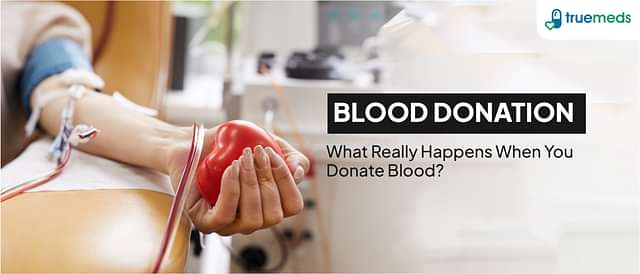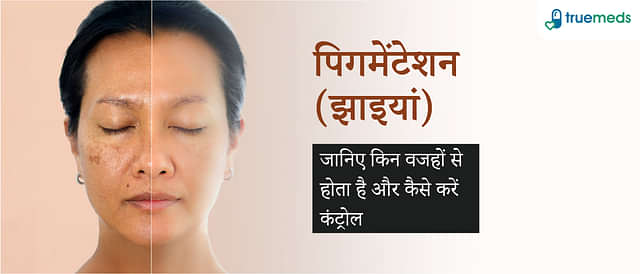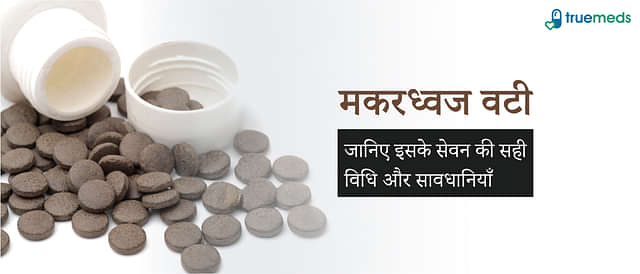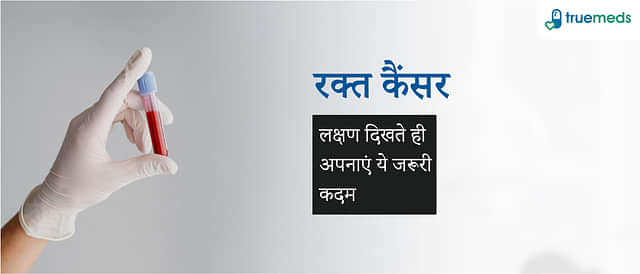Diabetes: Types, Symptoms, Treatment, and Prevention
Last updated on : 08 Aug, 2024
Read time : 19 min
What is Diabetes known as?
Diabetes mellitus is a condition that lasts for a long time and develops either because the pancreas does not generate sufficient insulin or because the body is not able to make proper use of insulin. Blood glucose levels are controlled by the hormone insulin. Hyperglycemia, also known as high blood sugar or glucose, is a major complication of untreated diabetes. Over time, it damages many parts of the body, especially the nerves and blood vessels.
Type 1 diabetes and type 2 diabetes are two types of conditions that are considered chronic. Diabetes that develops during pregnancy and prediabetes are both reversible conditions. Blood sugar levels above the normal range indicate prediabetes. However, the levels of glucose in the blood do not fulfil the criteria for the diagnosis of diabetes. Prediabetes is a risk factor for developing type 2 diabetes if the condition is not treated. When a woman develops diabetes during pregnancy, it is called gestational diabetes. However, the symptoms may disappear after the baby is delivered.
Different types of diabetes mellitus include:
- Type 1 diabetes mellitus: Diabetes type 1 is an autoimmune condition in which the body mistakenly targets healthy cells. In this condition, your pancreatic cells that generate insulin are destroyed. In most cases, the condition is identified in young people and children.
- Type 2 diabetes mellitus: Diabetes type 2 is characterised by either an insufficient supply of insulin in the body or abnormal sensitivity to insulin by the cells of the affected individual’s body.
- Prediabetes: The condition known as prediabetes is the stage before diabetes type 2. Your levels of blood glucose are higher than usual, but they’re not yet high enough to diagnose you with type 2 diabetes.
- Gestational diabetes: Sometimes, pregnant women may develop a form of diabetes called gestational diabetes. In most cases, diabetes that developed during pregnancy resolves after the mother has given birth. However, having gestational diabetes increases your risk of getting Type 2 diabetes in the future.
The following are some examples of rare types of diabetes:
- Monogenic diabetes syndromes: One in every 100 people who have diabetes has a type of medical condition called monogenic diabetes. Neonatal diabetes and juvenile-onset diabetes are two such cases.
- Cystic fibrosis-related diabetes- Diabetes associated with cystic fibrosis is a type of diabetes that only affects people who have cystic fibrosis, a genetic disorder.
- Diabetes caused by a drug or chemical: Type 2 diabetes caused by a drug or chemical is common after an organ transplant, during treatment for HIV/AIDS, and when glucocorticoids are used.
- Diabetes insipidus: Diabetes insipidus is a different and uncommon condition that causes your kidneys to release an excessive volume of urine. This problem affects a small percentage of the population.
What is diabetes type 1?
Diabetes type 1 is a chronic, autoimmune condition that inhibits your pancreas from releasing insulin. As an essential hormone, insulin controls how much sugar (glucose) is circulating in the blood. Diabetes mellitus type 1 was formerly referred to as insulin-dependent diabetes and juvenile diabetes. The following are the stages that are involved in the functioning of insulin when conditions are normal:
- Glucose (sugar) is metabolised by your body to supply it with its primary source of energy.
- When glucose enters the circulation, it causes a response from the pancreas in the form of insulin secretion.
- Insulin makes it easier for glucose to move from the blood into the muscle, fat, and liver cells, where it can be used for energy or stored.
- A reduction in blood glucose levels after glucose uptake by cells causes the pancreas to stop secreting insulin.
If your body isn’t producing enough insulin, glucose from your meal will accumulate in your blood, resulting in hyperglycemia (high blood sugar), and your body will not get the energy it needs from it. If treatment is not sought for this condition, it may result in major health complications or even death. To maintain their health and quality of life, people who have type 1 diabetes need to take synthetic insulin daily.
What is pre-diabetes?
Prediabetes is a health problem in which your blood sugar levels are higher than usual but not high enough to be diagnosed as diabetes. Diabetes is a condition in which your blood sugar levels are consistently high for more than 3 months. Prediabetic patients have a higher than or equal to 50% probability of progressing to complete diabetes during the following 5 to 10 years. However, some actions may be taken to prevent the emergence of type 2 diabetes.
What is gestational diabetes?
Pregnancy-related diabetes (GD) is a form of the disease. If a pregnant woman’s blood sugar levels are too high, she is more likely to develop this condition. In most cases, GD manifests itself between the 24th and 28th weeks of pregnancy. If you get gestational diabetes, it does not always clearly show that you previously had diabetes when you became pregnant. This condition develops during pregnancy. Both type 1 and type 2 diabetic women have difficulties during pregnancy.
What is diabetic insipidus?
Diabetes insipidus is a relatively uncommon condition that may be controlled in which the body releases an abnormally high volume of urine (pee) and is unable to effectively retain water. Depending on the primary reason, diabetes insipidus may be either chronic (lasting a person’s whole life) or temporary, as well as moderate or severe. Diabetes insipidus is usually caused by problems with a hormone known as antidiuretic hormone (ADH, also known as vasopressin). This condition may manifest itself in one of two ways: either your body does not produce enough ADH or your kidneys do not metabolise it effectively.
People who have diabetes insipidus urinate extremely regularly during the day, releasing massive amounts of urine every time, and they consume a lot of water because they are constantly thirsty. Patients with diabetes insipidus face serious health risks from dehydration if they fail to consume enough fluids to compensate for their increased water loss via urine. As a result, diabetes insipidus is a life-threatening condition that demands medical treatment.
Diabetes causes:
An excessive amount of glucose in the bloodstream is the root cause of diabetes. This is important to remember because the cause of raised blood sugar levels varies from type to type of diabetes.
- Causes of Type 1 Diabetes: Type 1 diabetes is induced by a dysfunction in the immune system. Your body’s immune system targets and kills pancreatic beta cells, which release insulin. In the absence of insulin, glucose levels in the circulation rise because it is unable to reach the cells of the body. There is also the possibility that genes play a role in certain cases. Additionally, a virus has the potential to initiate an immune system response.
- Causes of Type 2 diabetes and prediabetes: The following are the root causes of prediabetes and Type 2 diabetes: Your cells prevent insulin from carrying out its function properly, which prevents glucose from entering your cells. Because of this, the cells in your body have developed insulin resistance. If your pancreas is unable to produce enough insulin to counteract this resistance, you will develop type 2 diabetes. The amount of glucose that is present in your bloodstream increases.
- Cause of Gestational Diabetes: When the placenta produces hormones that enhance insulin resistance, the result is gestational diabetes. Because of this resistance, your pancreas is unable to produce a sufficient amount of insulin. Your bloodstream still contains an excessive amount of glucose.
- Causes of diabetes insipidus: Insufficient production or improper use of antidiuretic hormone (ADH, or vasopressin), which supports the kidneys in maintaining a healthy fluid balance, are the primary causes of diabetes insipidus. There are several subtypes of diabetes insipidus, each of which has a different list of causes. Sometimes medical professionals are unable to identify the root of this problem.
Diabetes symptoms:
The following are diabetic symptoms:
- Increasing thirst.
- fatigue and weakness
- Vision impaired.
- Numbness or tingling in the hands or feet
- Wounds or cuts that heal slowly
- abnormal weight loss.
- Excessive urination.
- Many unexpected infections
- Mouth dryness.
Additional symptoms include:
- Females are more likely to have dry, itchy skin and repeat cases of yeast infection or a UTI.
- In males, it may cause reduced sex desire, problems with erections, and a weakening of the muscles.
- Symptoms of Type 1 Diabetes: Some people have a rapid onset of symptoms, while others may experience a slow rise over several months. The onset of symptoms occurs in early childhood, adolescence, or early adulthood. The above-mentioned signs and symptoms can also be seen in fungal infections and urinary tract infections.
- Symptoms of Type 2 diabetes and prediabetes: In the early stages of type 2 diabetes and prediabetes, you may have no symptoms at all or not recognise them. Symptoms usually show up in adults, but the number of people with prediabetes and type 2 diabetes is going up in all age groups.
- Symptoms of Gestational Diabetes: Symptoms of gestational diabetes are rare. It is recommended that you be tested for gestational diabetes by your doctor between the 24th and 28th weeks of your pregnancy.
- Symptoms of diabetes insipidus: Diabetes insipidus is characterised by these primary symptoms:
- the constant need to urinate, even during the night in some situations.
- When you urinate, your urine should be a light colour or clear, and you should pass a lot of it.
- constant feeling of thirst
Diagnosis:
Your doctor may diagnose diabetes with the following blood tests:
Diagnosis of Type 1 Diabetes
A diagnosis of Type 1 diabetes requires testing of both blood and urine samples if your doctor has reason to suspect it. To detect autoantibodies, a blood test is performed. The urine is analysed to determine whether ketones are present. Such symptoms are diagnostic of type 1 diabetes.
Diagnosis of Gestational Diabetes
Two blood glucose tests are performed during pregnancy to check for gestational diabetes. One hour after consuming a sugary beverage, your blood glucose level is measured in a glucose challenge test. This test does not require you to fast. Results over 140 ml/dL indicate the need for a follow-up oral glucose tolerance test.
Diagnosis of Diabetes Insipidus
Your doctor may do one or more of the following tests to make sure you have diabetes insipidus:
- Analyze the amounts of the hormone vasopressin (also known as antidiuretic hormone, or ADH) in your blood.
- A glucose blood test was performed to rule out the possibility of diabetes mellitus.
- A urine test that checks for osmolality (how much water is in the urine) and/or ketone levels can find diabetic ketoacidosis.
- Diagnostic tests, such as an MRI, may be used to find out if your diabetes insipidus is caused by problems with your hypothalamus or pituitary gland.
Diabetes treatment:
Treatments for diabetes depend on the type of diabetes, how well the blood sugar is controlled, and if there are any other health problems.
1) Diabetes type 1 treatment
If you have type 1 diabetes, you need to inject yourself with insulin every day. As a result, insulin production in your pancreas is halted.
2) Diabetes type 2 treatment:
If you have type 2 diabetes, your treatment options include medicine (both for diabetes and for problems that become risk factors for the disease), insulin, and lifestyle modifications, including dieting, increasing physical activity, and decreasing weight.
3) Prediabetes treatment
If you have prediabetes, you must take steps to prevent it from worsening into complete diabetes. Focusing on modifiable risk factors allows for more effective treatment, such as losing weight with a balanced diet (such as the Mediterranean diet) and regular exercise. There are a lot of similarities between the ways that people are told to treat diabetes and those that are used to keep people from getting diabetes.
4) Gestational diabetes treatment
If you’ve been diagnosed with gestational diabetes and your blood glucose level is not too high, you might just need to make some dietary changes and start exercising regularly to feel better. If your sugar level is too high or hasn’t gone down despite all of their efforts, your doctor may give you medicine or insulin.
5) Diabetes insipidus treatment
Diabetes insipidus may not always be curable, but it can usually be controlled with the right treatment. Diabetes insipidus has a variety of causes and symptoms, each of which requires a different approach to treatment.
- Treatment of central diabetic insipidus and gestational diabetes insipidus: When treating central diabetic insipidus, desmopressin is commonly the drug of choice. It is a medicine that acts like an antidiuretic hormone (ADH, or vasopressin).
- Nephrogenic diabetes insipidus treatment: Thiazide diuretics are commonly prescribed for this condition because they help control the kidneys’ release of urine. Together, thiazide diuretics and nonsteroidal anti-inflammatory medicines (NSAIDs) like diclofenac may also decrease urine volume, so your doctor may recommend using both.
Diabetes Medications:
Types of diabetes medications include:
- Biguanides: Drugs of the biguanide class lower the amount of glucose the liver generates. The body’s ability to use insulin is improved, and the speed at which carbs are turned into sugar is slowed. As an example, consider the medication metformin.
- Sulfonylureas: It is a type of diabetes medicine that works by stimulating the pancreas to make more insulin, which lowers the amount of sugar in the blood.
- Meglitinides: Glinides are medications that stimulate the pancreas to produce more insulin, thereby reducing blood sugar levels.
- Thiazolidinediones: To better use insulin’s transport of glucose into the body’s muscles, fat, and liver, thiazolidinediones are used. Rosiglitazone and pioglitazone are two such examples.
- Dipeptidyl peptidase-4 (DPP-4) inhibitors: DPP-4 inhibitors are medications that stimulate the pancreas to secrete more insulin in response to a meal. They reduce the quantity of glucose that the liver secretes as well. Alogliptin, sitagliptin, and other similar drugs are examples.
- Glucagon-like peptide-1 agonists: GLP-1 analogues are medications that slow gastric emptying after eating, decrease the release of glucose from the liver after meals, and enhance insulin secretion. Liraglutide, exenatide, and other similar drugs are examples.
- Sodium-glucose Cotransporter-2 (SGLT2) Inhibitors: SGLT2 inhibitors are medications that help your kidneys excrete glucose from your system. Canagliflozin and empagliflozin are two examples.
- Alpha-glucosidase inhibitors: They lower blood sugar by making it take longer for the body to break down carbohydrates and by making it harder for the small intestine to absorb glucose.
- Bile acid sequestrants: Bile acid sequestrants reduce both cholesterol and blood sugar levels. The medications colestipol, cholestyramine, and colesevelam are all good examples.
- Dopamine agonist: dopamine agonists like this one decrease glucose production by the liver. Drugs like bromocriptine are an example.
To achieve optimal blood glucose control, several oral diabetic medicines may be administered in conjunction with one another or with insulin. There are also combinations of two or more of these drugs that may be taken as a single tablet. Some drugs are administered intravenously, while others must be taken orally.
Insulin-based drugs:
A wide variety of insulins are available for the treatment of diabetes. Physicians will discuss insulin alternatives and whether injectables should be used in combination with oral medications if needed. The following is a basic overview of the many forms of insulin.
- Rapid-acting insulins: Rapid-acting insulins are those that have a peak (when they reduce blood glucose the most) after one hour and continue to function for another two to four hours; they are administered 15 minutes before meals. Types of insulin that come to mind are insulin glulisine, insulin lispro, and insulin aspart.
- Short-acting insulins: It takes around 30 minutes for short-acting insulins to enter the circulation; they peak in two to three hours, and they last between three and six hours. Normal insulin is such an example.
- Intermediate-acting insulins: Insulins that are considered intermediate-acting enter the circulation within two to four hours, reach their peak between four to 12 hours, and continue to be effective for up to 18 hours.
- Long-acting insulins: Insulins that function steadily in the body for a long period are called “long-acting.” The typical duration of these insulins is 18 hours.
Changes to your lifestyle:
Diet and exercise may be enough to help you reach your blood sugar goals on your own.
Getting fit: If you’re overweight, losing weight may benefit you. Although a weight loss of 5 per cent or less is impressive, experts believe that dropping at least 7 per cent of your body fat and keeping it off is best. So, if you weigh 180 pounds, you may lower your blood sugar by dropping only 13 pounds. Although losing weight may seem impossible at first, focusing on food management and eating healthily is a good place to start.
To maintain excellent health, eat a varied and balanced diet that includes: If you have type 2 diabetes, there is no special diet you need to follow. If you want to learn more about carbohydrates and create a sustainable meal plan, consulting with a professional dietician is a good place to start.
- Food limitation.
- Reduce your consumption of sugar and other processed carbohydrates.
- Increasing your consumption of plant-based foods, such as vegetables and fruits,
- Increase your fibre intake.
Start exercising: You should aim for 30 to 60 minutes of exercise daily. Any activity that raises your heart rate, such as walking, bicycling, or swimming, will work. Mix in some strength exercises, like yoga or lifting weights. Take a meal when you go to the gym if you take medicine that decreases your blood sugar.
Manage your blood sugar levels: Your doctor will inform you whether or not you need to test your blood sugar levels and how regularly you should do so based on the therapy that you are currently getting, especially if you are taking insulin.
Diabetes prevention:
- Prevention of type 1 diabetes: No, Having type 1 diabetes means that your immune system is attacking your cells. The exact reason(s) why a person’s body might turn against itself remains unknown to scientists. Alterations to the genetic code are only one possible additional factor.
- Prevention of type 2 diabetes and gestational diabetes: If you want to prevent having type 2 diabetes and gestational diabetes, a healthy lifestyle is always your best opportunity, especially if you have a family history of the condition. If you have prediabetes, making changes to your life may slow or stop the start of diabetes.
The following are some aspects of a healthy way of life:
- Lose some weight: Reduce your body mass index (BMI) by 7–10%, and you will significantly lower your risk of developing type 2 diabetes and gestational diabetes.
- Participate in some physical activity: Just 30 minutes of fast walking every day may reduce your risk by roughly half, so get moving!
- Maintain a well-balanced diet: Adopt a healthy diet by limiting your intake of processed foods, sugary beverages, trans fats, and saturated fats. The consumption of processed and red meats should be restricted, and consider adding soya chunks to your meals. Soya chunks are rich in protein and make a great meat alternative, helping you maintain a balanced diet without extra saturated fats.
- Stop smoking: If you’re trying to solve one condition by stopping cigarettes, consulting your doctor to discuss how to avoid gaining weight in its place is a good idea.
- Prevention of Prediabetes: Contact your doctor if you have a family history of diabetes or another metabolic disorder. They might give advice on how to lower the chance that prediabetes transforms into full-blown diabetes.
- Prevention of diabetes insipidus: The following factors increase your risk of developing diabetes insipidus:
- carry the genetic predisposition to diabetic insipidus
- suffered a severe head injury or brain surgery.
- Using drugs known to induce renal damage
- be suffering from a metabolic condition, such as hypercalcemia or hypokalemia.
Conclusion:
You have a significant amount of control over the possibility that you will acquire diabetes (except Type 1 diabetes). However, if you, your child, or your teenager experience any signs of diabetes, you should consult your physician as soon as possible. If diabetes is detected in its earliest stages, treatment and management strategies may be developed and implemented much more rapidly. If you can keep your blood sugar level under control, you will significantly improve your chances of enjoying a long and healthy life.
All of the aforementioned drugs should be used only when prescribed by a doctor. If you want to buy these medications, please visit the pharmacist at the nearest drugstore. If you are searching for home delivery, a discount offer, or monthly savings on your bill, or if the pharmacy cannot provide the medications you want, you may also use an online platform like Truemeds. Our online pharmacy, Truemeds, provides the highest-quality medications at the lowest prices. We provide all varieties of medications, including branded, over-the-counter, and nutritional supplements, as well as generic medicines online at an affordable price. With free home delivery, you may save up to 72% when you purchase medications online from Truemeds.
Disclaimer
Our healthcare experts have carefully reviewed and compiled the information presented here to ensure accuracy and trustworthiness. It is important to note that this information serves as a general overview of the topic and is for informational purposes only. It is not intended to diagnose, prevent, or cure any health problem. This page does not establish a doctor-patient relationship, nor does it replace the advice or consultation of a registered medical practitioner. We recommend seeking guidance from your registered medical practitioner for any questions or concerns regarding your medical condition.
Popular Articles
Recommended Articles
Recent Articles
Top-Selling Medicines:
...View more
Top-Selling OTC:
...View more
Company
About UsHealth ArticleHealth StoriesDiseases & Health ConditionsAll MedicinesAll BrandsNeed HelpFAQSubscribe
Registered Office Address
Grievance Officer
Download Truemeds

Contact Us
Our customer representative team is available 7 days a week from 9 am - 9 pm.
v3.7.12
Our Payment Partners



























































